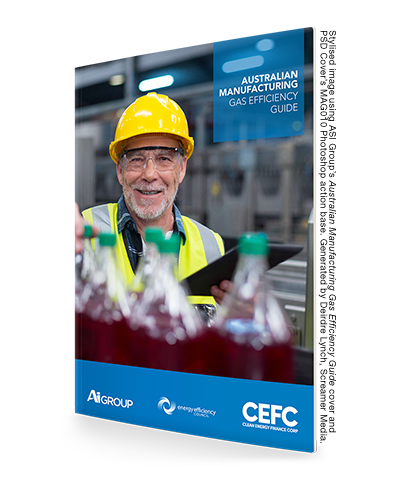Manufacturers step on the gas for energy relief
MANUFACTURERS Australia-wide are being assisted to take immediate steps to manage their energy consumption through a new industry initiative that has already saved some companies 25 percent in gas usage.
The Clean Energy Finance Corporation, the Energy Efficiency Council and the Australian Industry Group have launched Australian Manufacturing: Gas Efficiency Guide in an effort combat escalating energy costs and record gas prices.
A meat processing plant used the guide’s techniques to save $45,000 per month by cutting gas use by 21 percent, after upgrades to its boiler and steam facilities. A building products manufacturer saved $42,000 a year by installing a new control system on its boiler.
The guide examines the energy needs of a wide range of manufacturers, from food and beverage production to metals fabrication, printing and furniture manufacturing. 
The guide identifies a range of proven technologies with the potential to cut gas consumption by 25 percent. In the majority of cases, up front investment costs were $50,000 or less, with the costs recovered within just five years.
“Gas prices have risen substantially, and leading Aussie manufacturers are investing in energy efficiency to take control of their energy costs,” Energy Efficiency Council CEO Luke Menzel said. “The good news is that these projects are delivering benefits well beyond energy savings: operational life of equipment is increasing and maintenance costs and emissions are going down.
“This guide catalogues the learnings from leaders on gas efficiency so they can be leveraged across the entire manufacturing sector.” He said the guide was a comprehensive resource identifying practical and proven strategies to deliver energy and cost savings across manufacturing operations.
If the initiatives were all implemented at once, they would reduce greenhouse gas emissions by as much as 10 million tonnes a year, equivalent to taking more than two million passenger vehicles off the road, or meeting the electricity needs of 1.5 million homes.
“It is no secret that manufacturers are relatively large energy users. The good news is that clean energy solutions can make a very real and positive difference,” Clean Energy Finance Corporation CEO Ian Learmonth said.
“An initial investment of $50,000 or less can be recovered within just five years, producing lasting benefits for the business. By switching to more efficient equipment and cheaper renewable energy, manufactures can improve their competitiveness as well as cut greenhouse gas emissions.”
The guide says major improvements can be achieved through: Fuel shifting from gas to solar thermal, solar PV, bioenergy and low emissions electricity; equipment maintenance improvements; operational optimisation; replacement of old equipment with more efficient, newer equipment; and smart redesign to improve industrial processes.
The guide describes key planning requirements when embarking on efficiency initiatives including the key skills required, financial considerations and available financing options
“Australia’s manufacturing sector has confounded doubters in recent years by expanding strongly,” Ai Group CEO Innes Willox said. “The sector has the potential for even greater growth amidst a new industrial revolution that is transforming industry yet again.
“However, energy costs loom as one of the most significant headwinds to seizing this opportunity. We’re pleased to support this practical approach to helping manufacturers address these challenges.”
Mr Willox said manufacturing was vital to the Australian economy, contributing around $100 billion (6.2 percent) to Gross Domestic Product (GDP) annually and supporting nearly 900,000 jobs, or around 7.4 percent of total employment.
Australian manufacturers are also the most energy intensive in the OECD, and account for around 40 percent of Australia’s total natural gas consumption.
Australian manufacturers have been hit hard by volatile gas prices. The guide aims to help reduce their reliance on gas by identifying a range of initiatives that can deliver meaningful efficiency gains. For each initiative it provides upfront costs, payback periods and estimates the market readiness for manufacturers adopting the initiative.
The guide demonstrates that the gains available to manufacturers are significant and can go well beyond cost and emissions savings. For example, decreasing the heat load on industrial systems can reduce maintenance costs on large plant assets such as boilers.
Manufacturers can also improve the life expectancy of plant equipment from reduced operating hours and thermal stresses.
Further gains can be made in water consumption and treatment costs, with efficiency improvements in steam system and heat recovery operations. The guide shows manufacturers how they can take greater control of energy, and improve workplace safety and comfort, with technologies such as smart meters, energy management systems, and implementing more precise process controls.
The initiatives can be implemented at the design stage for new projects, or as a retrofit to existing equipment and systems. Many can be implemented through changes in practices and management.
ends

 How to resolve AdBlock issue?
How to resolve AdBlock issue?